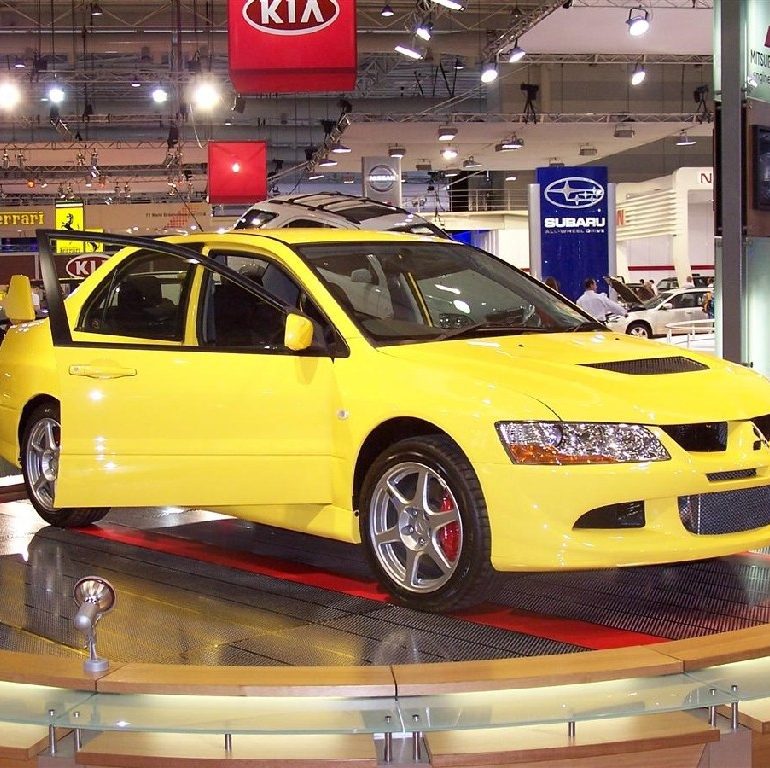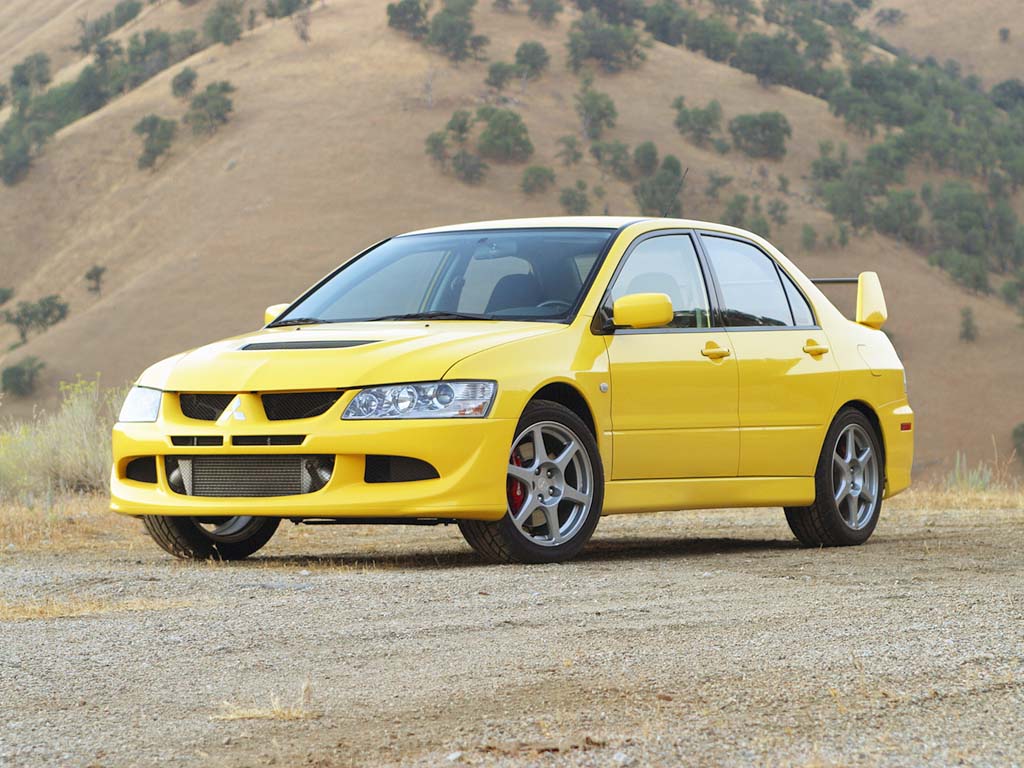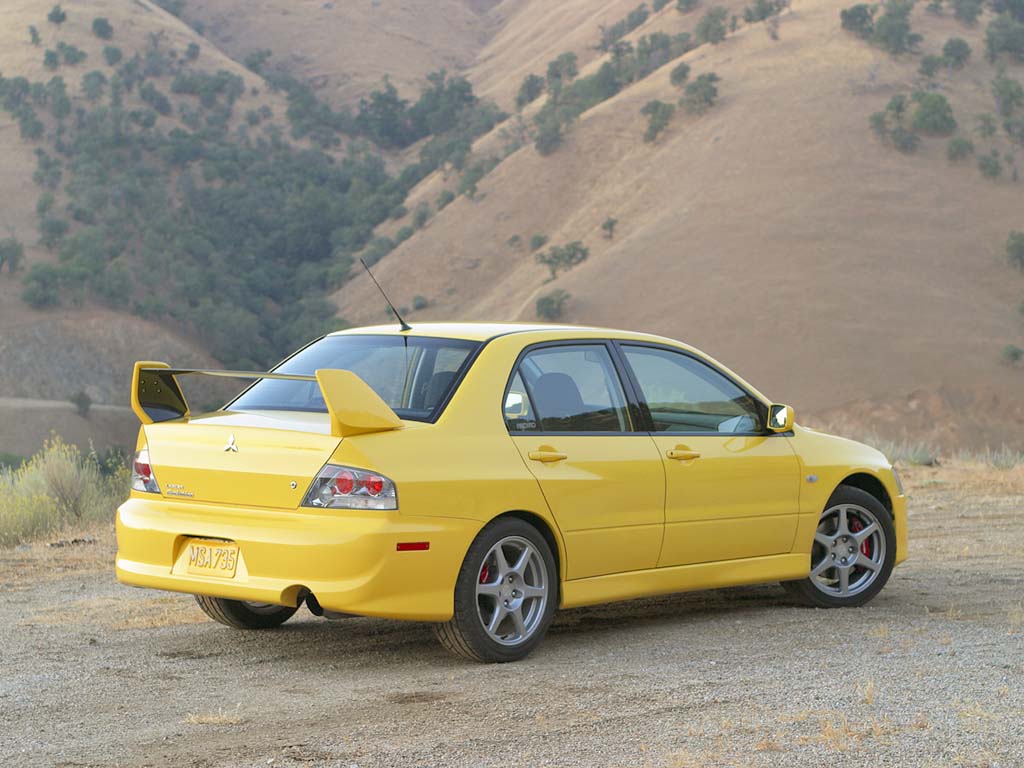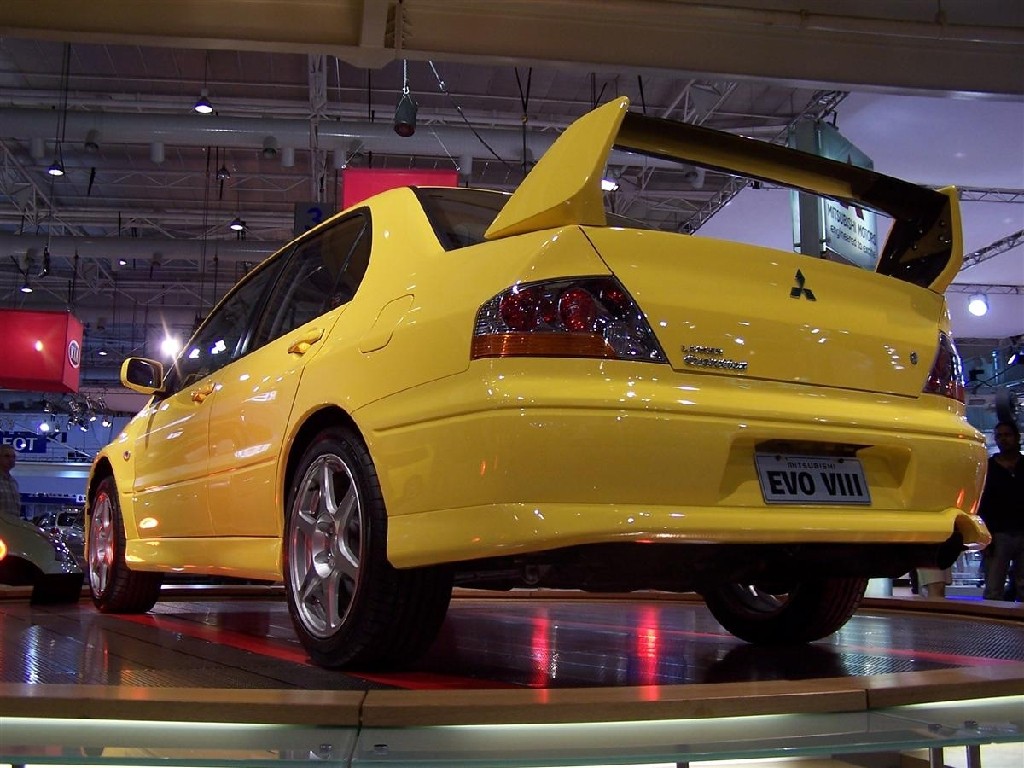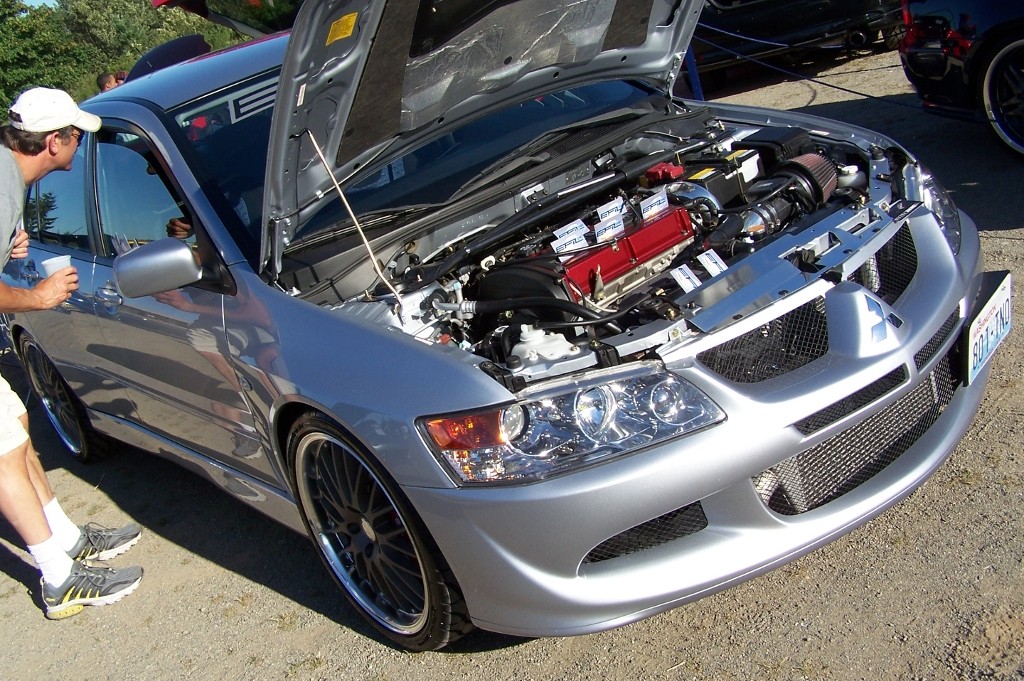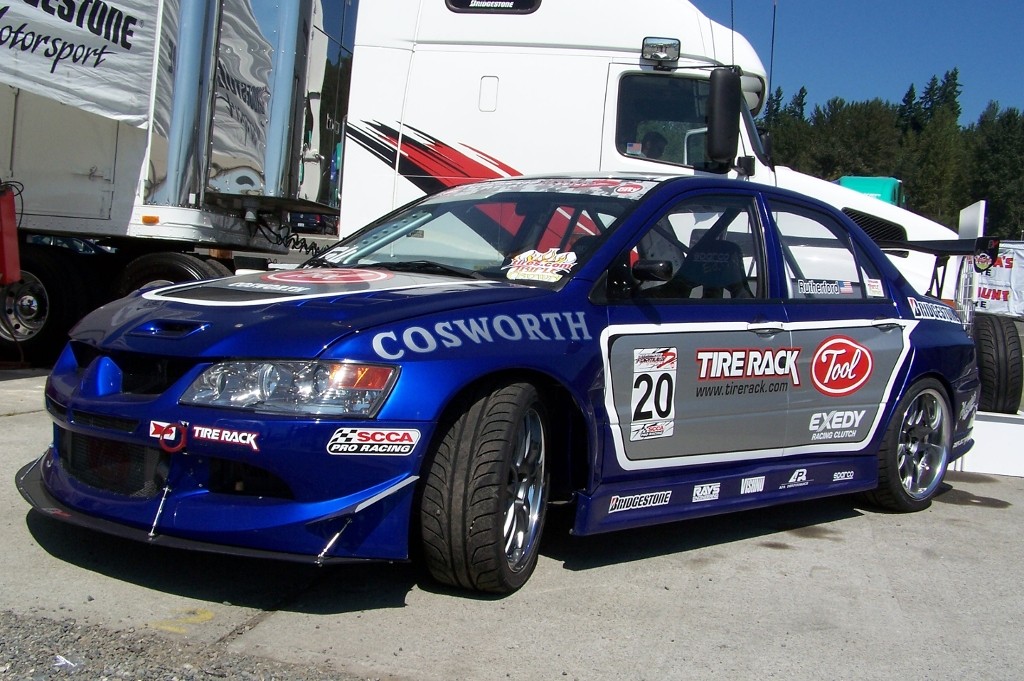2003 Mitsubishi Lancer Evolution VIII
Mitsubishi Motors Corporation (MMC), in collaboration with its U.S. affiliate Mitsubishi Motors North America Inc., today announced it will give the new Lancer Evolution VIII (U.S. market model) its first public showing at the Los Angeles Auto Show which runs from January 2 (January 4 for general public) through 12 at the Los Angeles Convention Center.
The Lancer Evolution series has evolved over the years as a result of competing in the World Rally Championship and other leading motorsport events worldwide and has attracted a wide following of enthusiast drivers. The production model is currently in its 7th edition in Japan and has been shipped in limited numbers to other world markets by Ralliart (MMC’s motorsport affiliate) as a base model for use in competition.
Lancer Evolution VIII marks the introduction of the series in the U.S. market where there has been considerable interest in the series for several years. MMC plans to phase Lancer Evo-lution into its model lineup in other world markets in the near future.
Having commenced shipments of Lancer Evolution VIII to the United States, MMC decided to give the model its world debut at the Los Angeles Show ahead of its unveiling on the Japanese domestic market, scheduled for early 2003.
The U.S. market specification Lancer Evolution VIII derives from the Japanese market Lancer Evolution VII GSR. While sharing major parts and components with the upcoming Japanese market Evolution VIII, the U.S. model has been developed exclusively for the U.S. to meet crashworthiness and emissions requirements, user needs and preferences, and road and traffic conditions in that market. With a price tag of under US$30,000, Lancer Evolution VIII offers unmatched driving pleasure.
Exterior Chnages
-Detail improvements for Evolution VIII over Evolution VII include: reduced air resistance; reduced, and optimized balance between, lift characteristics front and rear; improved engine cooling.
-The front bumper with integral grille marks the new MMC design identity with a raised triangular base in the center of the grille that is embellished with a chrome silver 3-diamond logo. The bumper also improves intercooler performance with a larger air intake opening on its underside. While conforming to and meeting 2.5 mph impact and other U.S. market regulations and requirements, Evolution VIII is just 80mm longer than VII.
-The air outlets in the aluminum engine hood are larger with shape and location optimized to give better radiator cooling performance and to reduce front lift.
-The engine undercover features an optimized shape that reduces drag while generating greater downforce and also improves cooling of the drivetrain.
-The rear spoiler uses carbon fiber reinforced plastic for both horizontal and vertical wings, a world-first on a production 4-door sedan, to reduce weight. The wing section design has been optimized to generate greater downforce without increasing drag.
Interior Chnages
-Evolution VIII uses an off-black color scheme and the strategic placement of dark titanium-finish panels to create a functional and sporty interior space.
-The sports instrument panel locates the tachometer in the center and features a full-scale speedometer that reads up to 170mph.
-Leather trim with black-stitching are used on the 3-spoke MOMOR steering wheel, shift knob, shift lever boot and parking brake grip.
-Evolution VIII is fitted with RecaroR front bucket seats developed exclusively for the U.S. market.
Powertrain
-Evolution VIII is powered by Mitsubishi’s 4G63-type 2.0-liter in-line 4-cylinder DOHC intercooler-turbocharged engine which conforms to Californian LEV1-LEV emission regulations and has been specially tuned for gasoline octane numbers used in the U.S.
-Reduced weight and increased strength throughout the powertrain together with improved engine cooling performance result in outstanding dynamic performance, enabling Evolution VIII to boast maxima of 271 hp (275 ps) / 6500 rpm and 273 lb-ft (37.7 kgf-m) / 3500 rpm.
-Mated to the powerplant, MMC’s proven 5-speed manual transmission features detail improvements to realize slicker and smoother shifting.
-The fuel tank has been redesigned to conform with U.S. regulations and capacity has been increased by 5 liters over Evolution VII to 53 liters.
-To meet the higher driving speeds common in the United States, the engine uses high performance synthetic oil instead of petroleum oil.
All-wheel drive & brakes
-Evolution VIII combines Mitsubishi’s full time 4WD system, which uses a viscous limited slip differential in its center differential, with a mechanical LSD on the rear axle to give excellent traction and control for outstanding driving pleasure over all surfaces.
-The new model is fitted with Brembo brakes, as used in the series since Evolution V. 17-inch ventilated discs with 4-piston calipers at the front and 16-inch ventilated discs with 2-piston calipers at the rear deliver positive and reassuring stopping power.
-Employing a steering angle sensor to detect steering input, the Sports ABS computer regulates braking force at each wheel independently for consistent and predictable braking and control when driving on the edge. EBD optimizes braking force distribution between front and rear wheels to deliver very stable and consistent stopping performance.
Body, suspension, tires
-To improve handling characteristics and ride quality, body and suspension stiffness have been uprated through the strategic placement of reinforcements that minimize weight increase. Reinforcements have also been added to conform with U.S. crash regulations.
-Suspension is by McPherson strut at the front and a multi-link arrangement at the rear. Optimized damping characteristics combine synergistically with the stiffer body to improve handling stability at the limit, while enhancing the driving experience and the ride quality at all speeds.
-Aluminum alloy road wheels are shod with 235/45ZR Advan A046 hi-grip tires developed specially for the U.S. market.
Story by Mitsubishi Motors Corporation
In Detail
| submitted by | Richard Owen |
| price $ | $ $31 000 USD |
| engine | Turbocharged 4G63 Inline-4 |
| position | Front, Transverse |
| aspiration | Turbocharged |
| valvetrain | DOHC, 4 Valves per Cyl |
| fuel feed | ECI-MULTI Electronic Fuel Injection |
| displacement | 1997 cc / 121.9 in³ |
| bore | 85 mm / 3.35 in |
| stroke | 88 mm / 3.46 in |
| compression | 8.8:1 |
| power | 202.1 kw / 271.0 bhp @ 6500 rpm |
| specific output | 135.7 bhp per litre |
| bhp/weight | 184.35 bhp per tonne |
| torque | 370.14 nm / 273 ft lbs @ 3500 rpm |
| redline | 7000 |
| body / frame | Unit Steel |
| driven wheels | Full Time 4WD w/Front and Rear LSDs |
| front tires | P235/45ZR17 Yokohama A-046 |
| rear tires | P235/45ZR17 Yokohama A-046 |
| front brakes | Vented Discs w/ABS |
| f brake size | x 356 mm / x 14 in |
| rear brakes | Vented Discs w/ABS |
| r brake size | x 305 mm / x 12 in |
| front wheels | F 43.2 x 20.3 cm / 17 x 8 in |
| rear wheels | R 43.2 x 20.3 cm / 17 x 8 in |
| steering | Rack & Pinion w/Power Assist |
| f suspension | MacPherson Struts w/Lower Control Arms, Shock Absorbers, Coil Springs, Anti-Roll Bar |
| r suspension | Multi-LInk w/Lower Control Arms, Shock Absorbers, Coil Springs, Anti-Roll Bar |
| curb weight | 1470 kg / 3241 lbs |
| wheelbase | 2625 mm / 103.3 in |
| front track | 1515 mm / 59.6 in |
| rear track | 1515 mm / 59.6 in |
| length | 5435 mm / 214.0 in |
| width | 1770 mm / 69.7 in |
| height | 1450 mm / 57.1 in |
| transmission | 5-Speed Manual |
| gear ratios | 2.928:1, 1.950:1, 1.407:1, 1.031:1, 0.720:1, :1 |
| final drive | 4.529:1 |
| top speed | ~249.4 kph / 155.0 mph |
| 0 – 60 mph | ~5.0 seconds |
| 0 – 100 mph | ~13.0 seconds |
| 0 – 1/4 mile | ~13.3 seconds |


